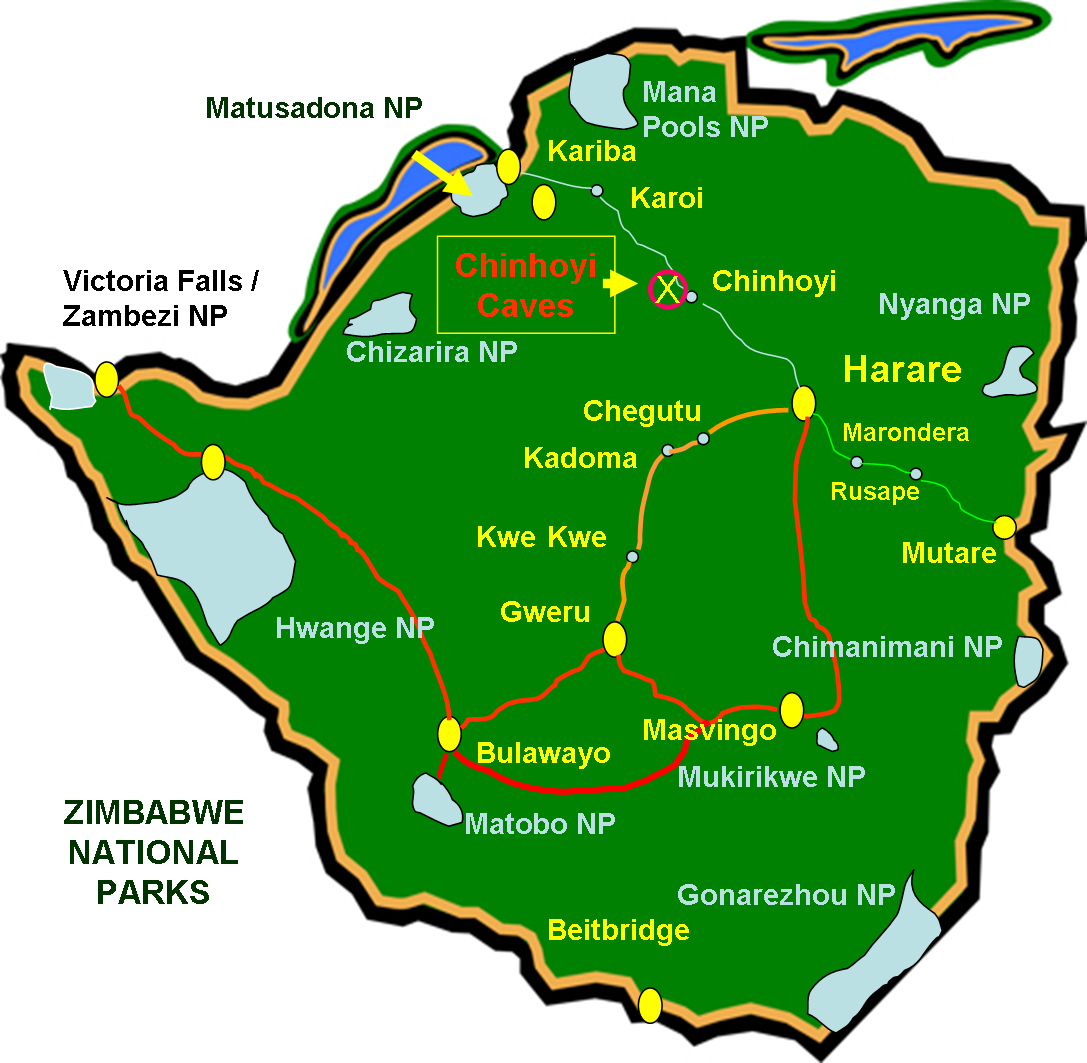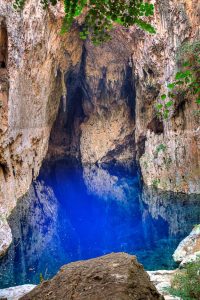Chinhoyi Caves
Situated in northern Zimbabwe, 76 miles (122 kms) North West of Harare
Chinoyi Caves (formerly known as Sinoia Caves) have long been a popular stop off point for travellers on their way to Kariba, campers and day visitors from Harare enjoying a picnic.
The limestone caves were first discovered by Frederick Courtney Selous in 1887 which he later described in his writings in 1888. The history of the caves goes back long before this period and excavations in and near the caves have revealed the presence of people going back to very early times.
Carbon dated pottery and human remains excavated from the area are estimated to date back to AD 650. These caves are the most extensive cave system in Zimbabwe that the public can access.
The caves were designated a National Park in 1955 and re-designated as a Recreational Park in 1975 and as such are managed by ZIMPARKS (Zimbabwe Parks & Wildlife Management Authority).
The caves are located in Makonde District, Mashonaland West, in central, northern Zimbabwe. They lie approximately 9 kilometres (5.6 mi), by road, northwest of Chinhoyi, the nearest large town, and the location of the district and provincial headquarters.
There is a campsite run by the National Parks Authority and Caves Motel, a quiet, private establishment is located on site. The picnic and campsites are serviced by three ablution blocks with hot and cold water, baths, toilets and showers.














